Your cart is empty
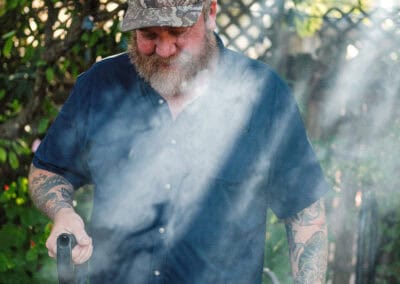
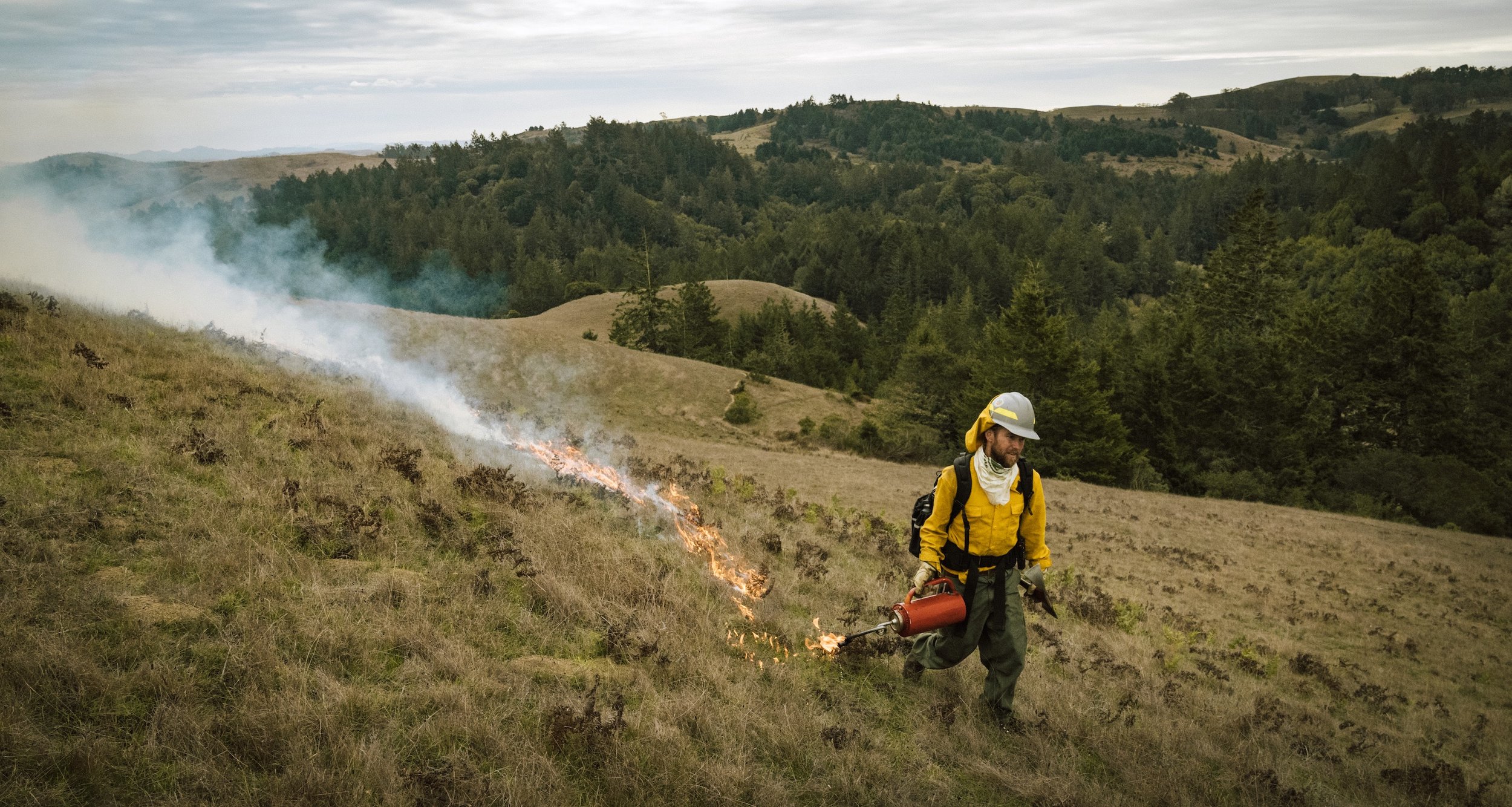
WORDS BY Lindsey Davis
PHOTOGRAPHY BY Sashwa Burrous
PRESENTED BY Mystery Ranch
For thousands of years, native peoples in Northern California lived in a direct relationship with fire. Prescribed fire was used to create high-quality forage for deer and elk, and as a direct hunting tactic to drive game into specific areas to assess and manage the health of the herd. By introducing smoke into the watershed, they could cool the rivers and encourage salmon to move upstream to spawn. Fire, too, was used to manage hazel and other plants for basketry, and to tend wetlands for good waterfowl habitat and trapping. Cultural fire was a way to take care of the oak woodland for a healthy acorn crop — the employment of fire was a way of life. California tribes were, and are, fire-dependent cultures.
In Euro-American history on the North American continent, fire has been viewed predominantly as an enemy to life. Wildfires threatened timber supplies enough for the U.S. government to start setting aside national forest reservations in 1891. The U.S. Forest Service was established shortly thereafter, and given managerial control of those lands, soon to be renamed National Forests. After the Great Fire in 1910, which burned three million acres in Montana, Idaho and Washington in just two days, the Forest Service decided that the only way to prevent fires was to suppress them as quickly as possible. The Forest Service opposed the practice of light burning, even though many ranchers, farmers and timber harvesters favored it because it improved land conditions.
Enter Smokey the Bear, the affable ursine persona created to educate the public on fire prevention. The USFS invested in protection by way of roads, communication systems, lookout towers, and ranger stations. In 1933, the federal government created the Civilian Conservation Corps, which put thousands of men to work building fire breaks and fighting fires. They were to be put out as quickly as possible, and advances in technology supported this mindset with airplanes, smokejumpers, and fire suppression chemicals, making it possible to fight fires no matter where they were burning.
For decades, fire exclusion policies made it illegal to burn in ancestral territories on public lands, which turned traditional practices, once vital to life, into acts of arson. To be granted permission to once again burn in ancestral territories requires complicated, government-approved processes and costly, specialized equipment, along with fire training and qualifications. Even this May, as persistent winds carried the ominous prediction of another summer of megafires, members of the Tripp family, a well-known native family in the region, were charged with arson for burning around their home at Oak Bottom on the lower Salmon River where their family has continuously burned for thousands of years.
Ecosystems that depend on fire have been subject to a management culture of fire suppression for over a hundred years now. As a result, three times the amount of biomass and vegetation exists on the landscape. It’s sucking up water, building fuel loads, and causing dramatic changes in water conditions for threatened and endangered aquatic species like salmon. Meanwhile, devastating wildfires are ripping through communities across the country, leaving destruction in their path.
There are, however, examples of people and communities doing things differently by combining Indigenous knowledge with Western fire management. Through the lens of three key experts in fisheries biology, traditional ecological knowledge and fire ecology, we can reshape our understanding to learn how fire plays an integral role in the flow of resources and nutrients in the landscape, and how you can’t restore salmon until you restore fire. While prescribed burning presents solutions for fuel load reduction, it can also unlock other essential ecosystem benefits.
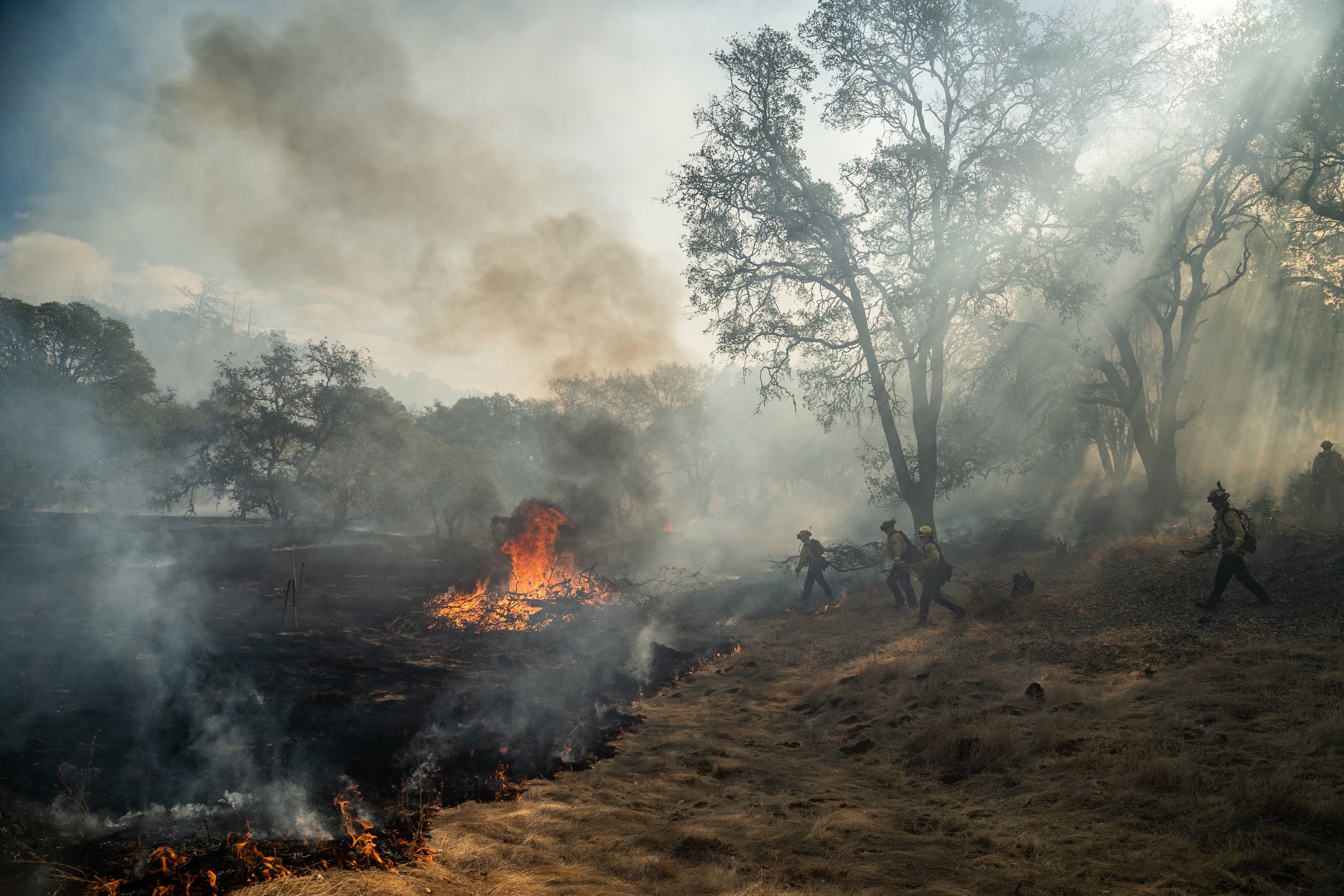
Will Harling
Will Harling, based in Forks of Salmon, California, is the director of the Mid Klamath Watershed Council, a non-profit in Orleans, California that organizes communities along the Klamath River to support tribal-led efforts to take down dams, revitalize salmon habitat and ultimately restore fire process in the mountains of the region. He grew up in one of the wildest and remote places in California, snagging salmon and living in community with Indigenous Karuk families. His work focuses on fisheries, fire restoration and community revitalization.
“What really changed my life is when the salmon run started to decline with the droughts in the late 80s that also spawned the worst wildfires that anybody had ever seen in the region. They called it the siege of ‘87. Researchers came from around the world to study the closest thing to a nuclear winter on earth, because in the middle of summer, the inversion layers were so thick the temperature was 50 degrees. The water was freezing, and you couldn’t see the mailbox across the road for months on end. Very early on, we knew something was wrong with fire and how we were managing it.”
Will describes how these fires altered the landscape, burning so hot and through so much logging slash in a fire-starved forest that whole granite boulders turned to sand and washed down the mountainside in winter rains, choking the river with sediment. Pool depths were cut in half, ledges the salmon used to hide under disappeared, and fish were dying in the rivers waiting to spawn. Land management in the area had changed dramatically from holistic, fire-dependent Indigenous management to a focus solely on gold and timber, and the salmon runs were dwindling.
“In 2013, we lost over 300 of our 700 spring Chinook salmon that came into the Salmon River that year due to lethal water temperatures. Every day I would drive the Salmon River Road back and forth and look at the thermal refugia where cold water tributaries come into the river, and there were dark clouds of fish, just hanging on to life, tracing the edges of the cold water plume. Every day, there’d be a couple more big white bellies at the bottom of the river.
“For better or worse, an arsonist drove upriver and lit the whole drainage on fire. After that, the smoke settled in and the temperature of the river dropped five degrees and the fish stopped dying. So you look at a fire from one angle and you see it as destructive, but you also look at it from another angle and realize that there are too many straws in the cup, sucking all the water out. Now, there’s three times the amount of biomass and vegetation on the landscape because of fire suppression. That’s sucking up all the water and reducing our summer base flows. There’s not enough water in the river for the fish anymore.”
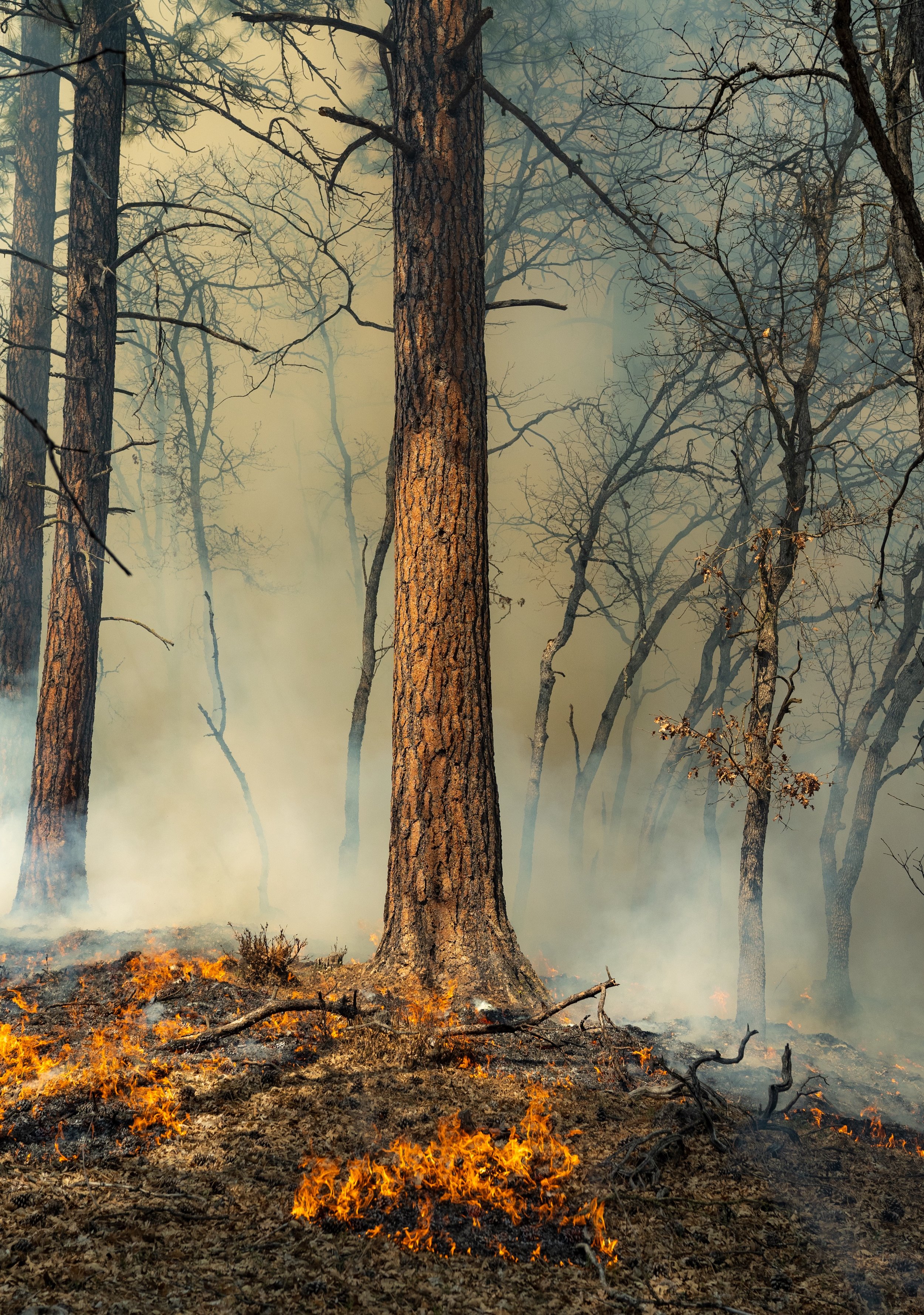
Ethnographic research details the role of inversions in cooling the rivers to bring the fish up into the lower river. Fire’s connection to the health of salmon is something that has been known and practiced by the Karuk people for generations. For them, fire was a way of life, central to their world renewal ceremonies, which took place around the new moon in September.
Fire exclusion has a violent history in Northern California. In the early 1900s, native people were being killed trying to practice cultural fire. The rates of incendiarism along the “Klamath strip,” from the mouth of the Klamath up to the town of Orleans, were nearly 17 times higher than the state average. The United States Forest Service use of fire suppression to increase timber yields had a devastating effect on California tribes because it took away their primary management tool.
“I have been told that taking fire away from the native people on the Klamath River was akin to the slaughter of buffalo in the Great Plains. You take away the food source and you can control people. That’s essentially what happened. There was a little bit less gold in this section of the Klamath River, and the genocide wasn’t as complete here. The stories and traditional fire knowledge were able to pass on through the generations and make it into the present day. Sadly, thousands of years of Indigenous fire knowledge has been tossed aside for this catastrophic, century-long experiment called fire suppression.”
Frank Lake
Frank Lake is a Forest Service research ecologist and former habitat fisheries biologist whose academic journey was born out of his cultural teaching and training as a Karuk descendant with Yurok family members. Raised in Northwest California, today he lives very close to his ancestral territory and sacred high country in the Siskiyou Mountains. He realized that to articulate and explain the depths of Indigenous knowledge, he’d have to learn the Western ways of framing ecology, environmental science, forestry, fire and botany. Early on in his career, he learned that to restore fish, he had to restore fire. He started doing ethnographic interviews to learn more about historical fire regimes and tribal burning as it relates to fire hydrological cycles for water quantity, quality, forest conditions, and the evolution of cultural fire regimes. His work is a co-production of science with Indigenous and Western knowledge to show the very beneficial ways in which fire influences habitat diversity, species, and the overall wellness of the ecosystem.
“From a tribal perspective, we have a holistic approach that has been marginalized and underrepresented in the Western academic teaching and training. This has led to the misconception that native people were just living off of nature and that lightning was adequate in developing the characteristics, qualities and attributes of a fire regime. I try to, as a scientist, temper my beliefs and maintain my objectivity and the qualities of the work I do as interdisciplinary and transdisciplinary studies — everything from paleoclimate to fire history to ethnobotanical studies. Even things on modeling and remote sensing say that this is the way tribes interacted with their environment. We, as large landscape collaborators, are trying to address some big fire and climate issues, and we need part of that solution to come from Indigenous people.”
Lake describes the Karuk people as a fire-dependent culture with a high reliance on their cultural practices and knowledge systems. They live in a fire-prone ecosystem, with a shared dependency with other species for food, medicine, materials, and regalia. The tribal perspective of burning is in the context of the whole ecosystem. Cultural fire is a way of managing the landscape for the health of all species — including humans.
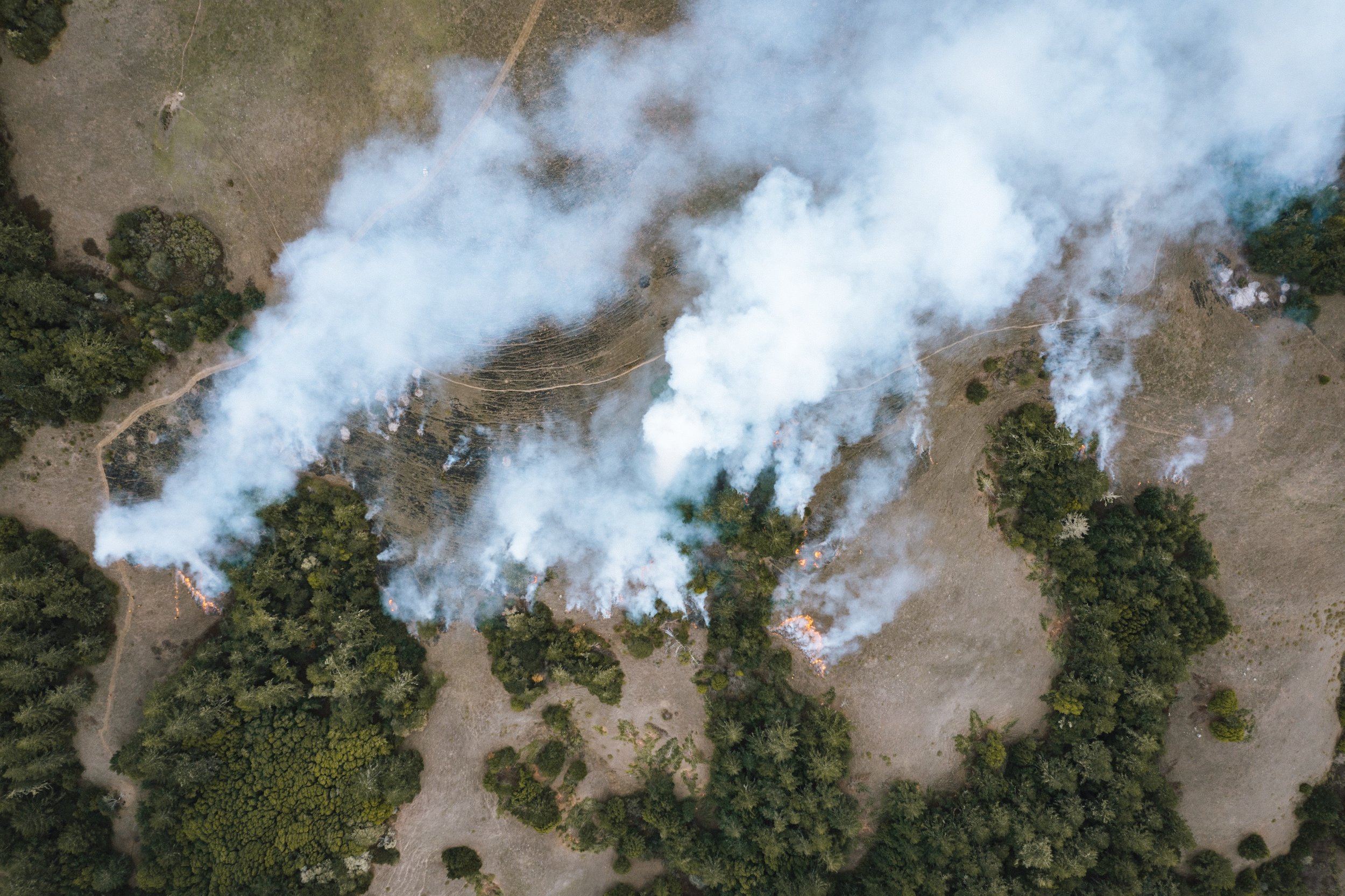
“The tribal perspective is that you can do prescribed burning, but we’re also thinking about the context of that ecosystem, habitat needs, and the species that are going to be affected negatively or beneficially from that. How can you promote fire risk reduction through prescribed burning, but also reduce the pest of the acorn crop that also increases the food web? There are indirect things like burning for acorns as a part of woodland management that really increase the food crop for people, tribes and wildlife, but also reduce the threat of wildfire because there’s not as much fuel loading. We’re thinking about burning to create basket materials that provide some of the forage quality and shoot production for wild game. That greenup matters to the pollinators who then kiss the flowers and make the berries and other things, and that’s missing — that holistic management is missing. In the burning that would facilitate habitat for upland game birds and waterfowl and trapping, tribes burned wetlands, like a lot of the cattail and tule and marsh areas in the cool winters before the bird started breeding or before they migrated in for breeding season. That’s another type of loss of ecosystem service through that tribal understanding of human services for ecosystems.
Lake describes the difficulty of fire exclusion for tribal people. He explains how they understand good wildlife management and care-taking responsibility with the use of fire, and how that is very much linked to plentiful hunting opportunities.
“Tribes have been separated from the use of fire as part of a cultural practice that would have benefited so many other elements of the game and the life history requirements, and the habitat for those hunted species. It’s illegal to burn on our ancestral territory on public lands because it’s not government-approved. When I am successful as a hunter, a lot of that I attribute to a long, intergenerational teaching of understanding where species are, what their habitat conditions are, particularly the role of fire in creating the conditions and the quality of the habitat for those species that we have a cultural belief of taking care of, and our relations to nature to make sure they are well. There’s a tribal philosophy, or a Karuk one, that the many species that we hunt and use as game and regalia have the right to thrive, reproduce and have their own wellbeing. In the tribal belief, that’s part of our caretaker responsibility.”
Fire has proven benefits for habitat, forage and ecosystem health. In the Karuk way, you could also understand the success of burning efforts by assessing the health of wildlife during the hunting process.
“My grandpa would say, ‘When you see those animals in ash rolling around, they’re happy.’ After a burn, they can roll around in ash piles and get rid of their ticks and mites. They also chew on charcoal to get rid of their gut parasites. In the middle of gutting a deer, my grandpa would have me look at organs and say, ‘This one’s healthy; this was a good burn because of the amount of fat on the buck’s ribs and around the hindquarters and organs.’ And so there are a lot of different ways of evaluating beneficial fire effects through the lens of your prey.”
Frank’s vision for the future is for us to recognize how tribes are being innovative and incorporate their knowledge as part of the solutions to landscape restoration strategies, game management and harvesting.
“It’s human services for ecosystems. It takes active stewardship and hunting as part of that overall system integrity to maintain populations of valued game. And then, what would it take in the right and appropriate types of fire use to really make those communities of our favorite prey more resilient and resistant, as well as how we’re co-beneficiaries of it? We will have better hunting habitat. We will have reduced fuel loading. Then, a wildfire that comes through on a dry summer day with high winds becomes less of an emergency, because we’ve done things to integrate fire stewardship on our terms. That’s the part I want to see—that we go from perceived competitors of a scarce resource, hunting over who’s going to get the nice buck or the grouse, to then being cooperators of abundance. We can all fill our tags.”

Sasha Berleman
Sasha Berleman is a fire ecologist based in Oakland, California. She is the founder and director of the Fire Forward Program at the Audubon Canyon Ranch, a founding member of the Bay Area Prescribed Fire Council, and the co-chair of the Good Fire Alliance prescribed burn association.
“I grew up in Southern California, an hour north of San Diego in what’s called the Inland Empire, back when there were very few people there. It’s a valley surrounded by chaparral-covered mountains on all sides. I have distinct memories as a small child of these huge wildfires burning all around our home. We never had snow days, but we did have smoke days, where the air quality was too bad to go to school. I remember opening the front door and seeing our green lawn covered in white ash as though it had been snowing. Around ages four to six, I had this string of night terrors that I was trying to save my family from a raging wildfire. So fire was a big influence for me as a little child in both wonder and fear.”
Today, her program, Fire Forward, teaches wildland firefighter courses and trains people how to plan and implement ecologically informed prescribed burns. Training and teaching more people with the intent of exponentially growing the community is an important way to meet the demand for getting good fire on the ground. Fire Forward works to eliminate the barriers of burning through offering a fireline and prescribed burn training. They also offer a shared equipment and gear cache to do work dedicated to prescribed burning in the region. Her team provides critical training, leadership and support to the local iteration of prescribed burn association, the Good Fire Alliance. The alliance is a 350-member community network of people around the region coming together as neighbors helping neighbors to get good fire on the ground and provide community support in fuels and fire management. She describes it as a groundswell of people galvanized by the impacts of wildfires in her region since 2017, and their desire to take action around a better way of living with fire.
“The Good Fire Alliance community is made up of everything from private landowners, tribal members, people who work in ecology or land management, and nonprofit organizations, to baristas and artists and computer coders and ranchers; there’s space for all kinds here.”
Her journey to becoming a fire ecologist wasn’t always obvious. Unlike Lake and Harling, her upbringing didn’t include an understanding of the realities of the fire-dependent ecosystem she was born in. It wasn’t until college that she was exposed to prescribed fire as an ecosystem service.
“I learned in a docent training program at Santa Rosa Plateau that fire had an incredibly valuable ecological role in chaparral, in vernal pools and oak woodlands. There are fire-dependent species on that plateau that will not germinate until fire burns through the landscape. I learned for the first time that the Indigenous peoples across California had been using fire as a tool for thousands of years. This landed for me as a glimmer of hope that maybe there was something that could be done. If people had lived in this deeply positive and interconnected way with fire for thousands of years and California needed fire to thrive, it must be possible to change our relationship with it today and restore a more positive way of living with it.”
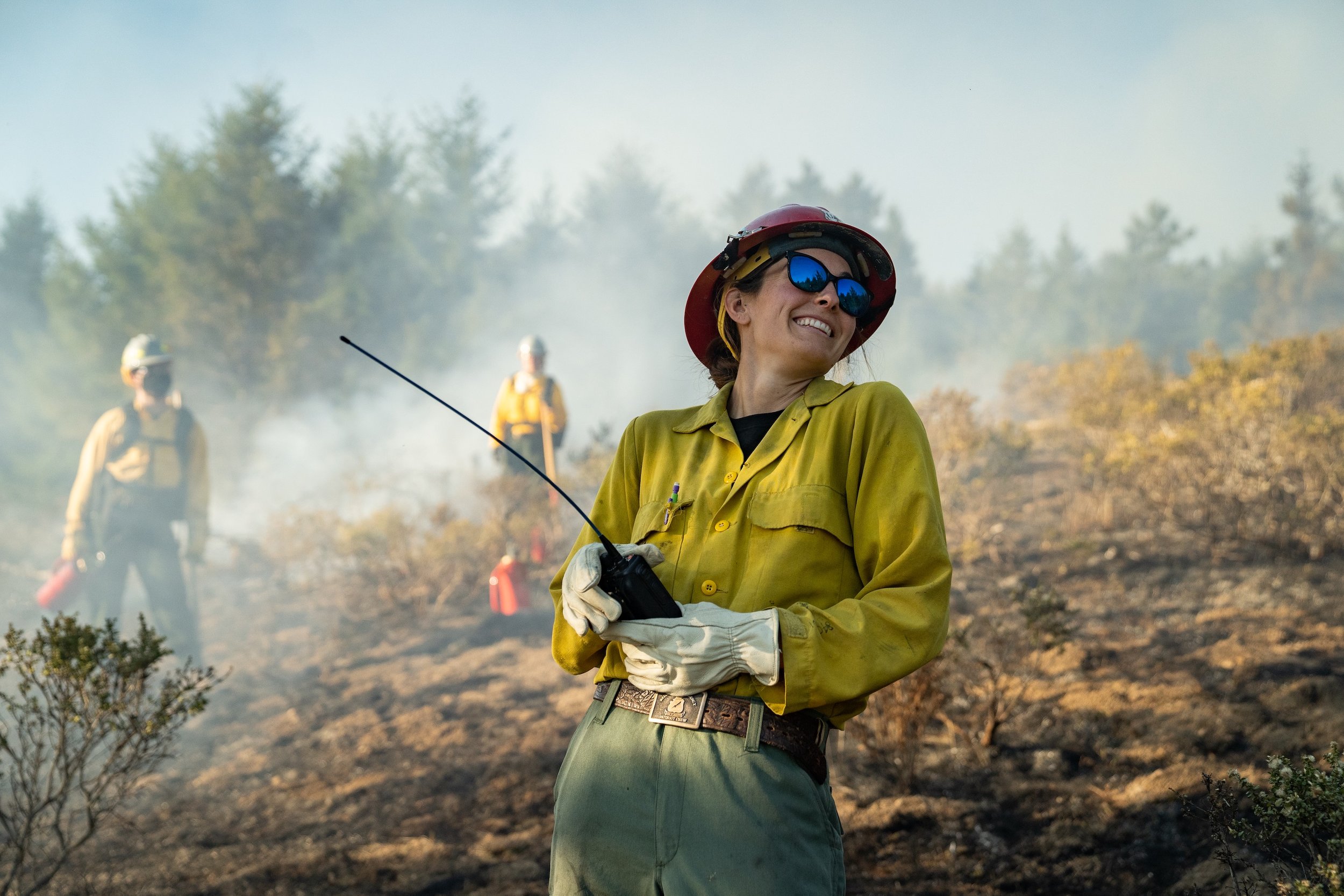
Sasha transferred to UC Berkeley. As fate would have it, she enrolled in a plant identification class that took her up to the Klamath region, where she got to spend a day learning from Frank Lake.
“I met Frank Lake, and that was my first window into truly understanding that this isn’t history, it’s reality. There are still people living with fire in this positive way. These are people who are looking at landscapes, seeing what’s needed and tending and caring for them as family. It made so much sense. So, I left that field trip with Frank Lake and knew that I would continue working to inspire stewardship responsibility, while continuing my own journey getting to know these ecosystems as dear friends. Learning — a lifelong process for me — and teaching others the inhabitants of these systems around us, their assemblages, how to really see and work to understand them, reading what thriving looks like and being able to prescribe treatments that benefit these cherished ecosystems and people alike, was going to be my bread and butter.”
Sasha set her gaze on getting a Ph.D. in Wildland Fire Science with a focus on fire ecology and prescribed fire, and eventually took a job at Audubon Canyon Ranch. She was hired in 2015 to coordinate and execute the first cooperative prescribed burn in the region to utilize the modern permitting process on private lands. They wanted to do everything by the book and be an example of a coordinated stakeholder approach. It took until May of 2017, but when the Nuns fire ripped through that same area just months later, it left the oak woodland she’d burned untouched and the rest of the forest that hadn’t been burned completely torched. The community took note. This was the public support that was needed for policy change to take place. Seeing the comparison of the areas that had received treatment to survive was a contagion for people to catch on to what was needed.
Sasha is seeing promising results in her management areas, especially as she is able to return to the same zones to do repeated treatments. She describes visiting an area of historically coastal prairie so thick with Douglas fir encroachment that you could no longer see the ocean. Coastal prairie is the most diverse grassland ecosystem in North America, and one of the most threatened habitats, with less than 5% remaining. In this area, she describes how there were little tufts of nearly dead native bunch grasses barely peeking up through the thick layer of duff on the ground prior to their prescribed burn.
“When we went back after the winter season, this incredible carpet of green and thriving native bunchgrass stands were filling the understory, putting up fresh seed, and soaking up the new availability of light, water and space. There was a whole array of species in there too, including a rare native bunchgrass that had not been found in that area before the burn. Just seeing that one prescribed burn creates such space for recovery of the ecosystem was remarkable, but there was a wildfire risk reduction element that burn hit as well. Our team measured the loading of surface fuels in the unit before and after burning, and we found that the fuel load went from 29 tons per acre of dead branches, twigs and needle cast before the burn to seven tons per acre six weeks after the prescribed burn. The dramatic change and multiple benefits of this one prescribed burn were incredibly rewarding.”
The modern-day practices of fire exclusion, increased fuel load and population density, along with the wildland-urban interface, extended droughts and more dramatic weather events, have made our recent experiences of fire devastating. There is no doubt we need to fix our relationship to fire.
Like spring floods and landslides, disturbance and management with fire shape the landscape and in many cases create the essential conditions other species need to thrive. Prescribed burning as a single objective can reduce fuel loading and alleviate the risk of undesired wildfire. However, with the co-production of Indigenous and Western knowledge, there are also ways in which fire can benefit habitat diversity, water quality and quantity, and the overall health of an ecosystem. If we shift to a strategy of active management rather than passive protection, as was the practice for thousands of years, the fire then becomes the instrument for its own subduing.
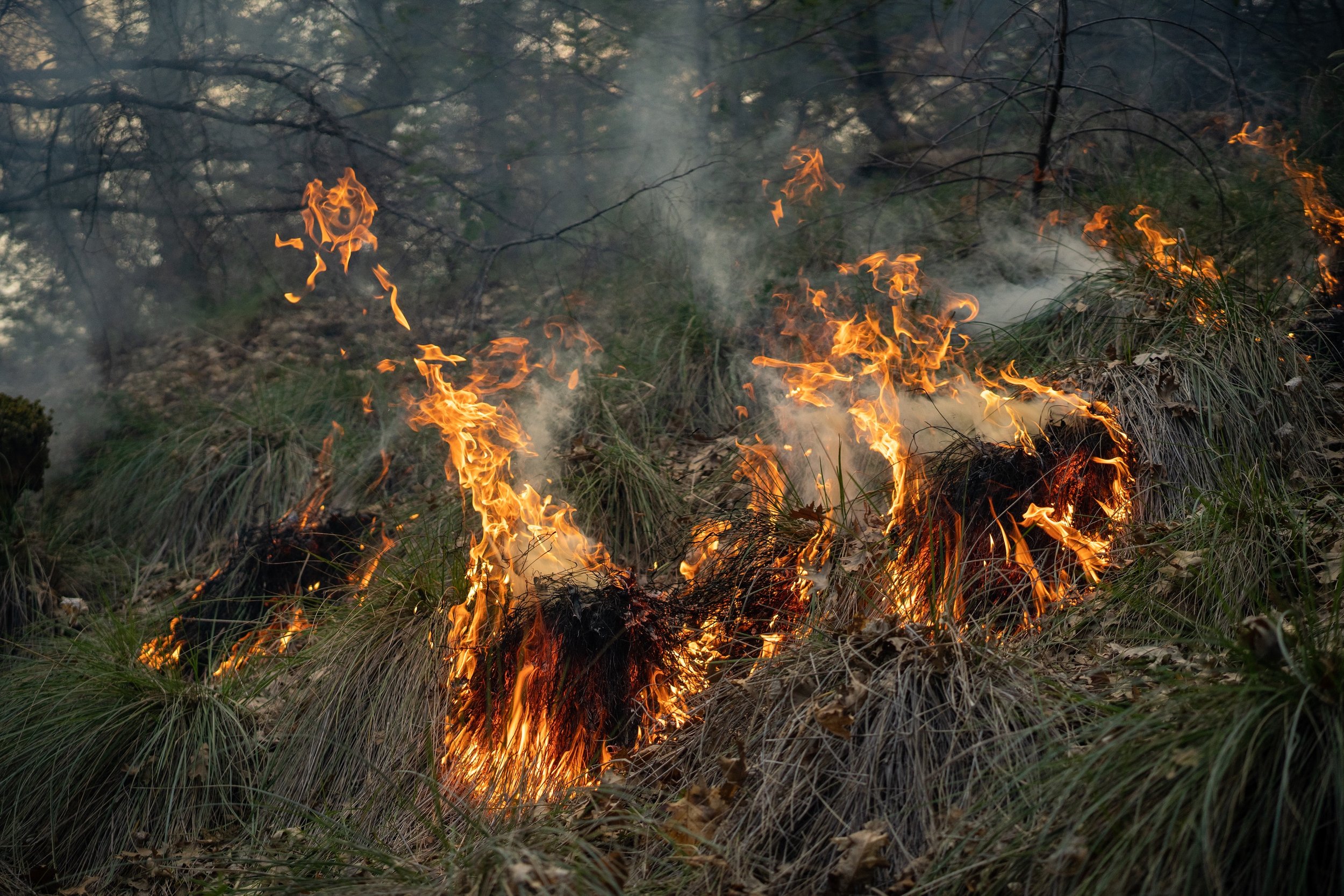
Originally published in Modern Huntsman Volume 7
Related Stories

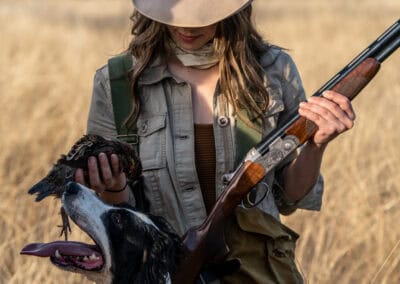

Latest Stories


